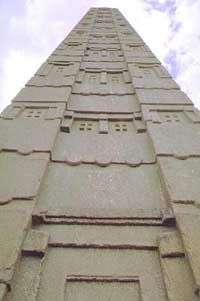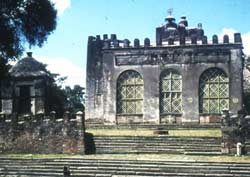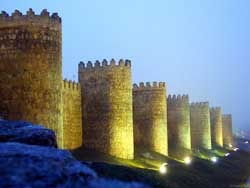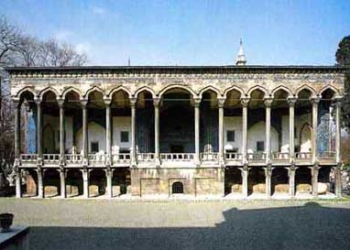 Located in the Tigre region of northern Ethiopia, the city of Aksum has lent its name to the famous kingdom described in a 2nd-century Greek text as the “third world kingdom,” which was known to the Romans of that time.
Located in the Tigre region of northern Ethiopia, the city of Aksum has lent its name to the famous kingdom described in a 2nd-century Greek text as the “third world kingdom,” which was known to the Romans of that time.
This capital sits on a trade route for ivory, rhino horn, tortoiseshell, and glass beads. Aksum still bears the remnants of a glorious past across a vast area: colossal stelae, the tallest of which (33m) is the largest monolithic stone obelisk ever carved and erected by humans,  stone pillars inscribed with Ethiopian legends, and royal tombs.
stone pillars inscribed with Ethiopian legends, and royal tombs.
According to legend, one of the tombs is believed to be that of the Queen of Sheba. The western part of the archaeological site features the remains of three ancient castles built in the first millennium AD and an 18th-century ancient tomb, providing valuable evidence of Ethiopian architectural art from that era.
Inscribed as a UNESCO World Heritage Site in 1980, Aksum is set to undergo restoration as part of an “international campaign” to preserve and promote Ethiopia’s cultural heritage.





















































